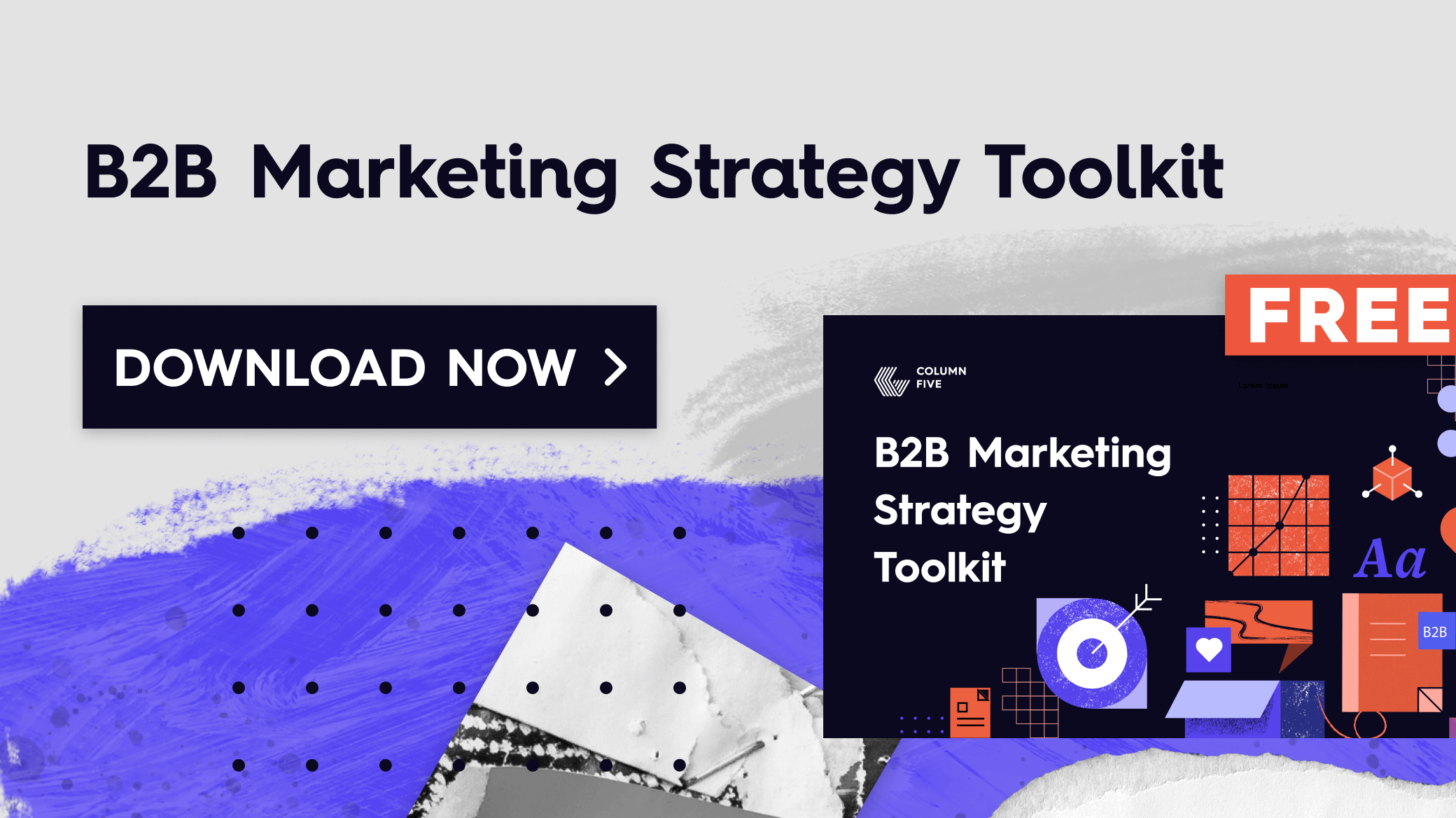If you want to create successful SaaS marketing, you need to focus on one thing: providing value to your audience. Talk about the things they care about, deliver the information they want, and do it in a way that feels natural and authentic to your brand. (It’s a fairly simple formula but one that many brands seem to struggle with—usually because their content is focused on the brand, not the audience.)
But how do you ensure your brand is providing value? Start by using content to educate your audience. No matter who your audience is, or what your service is, I can guarantee that what they need and want is information that helps them learn, grow, and improve in some way.
When your brand provides that information, you’re providing a much-needed service and positioning yourself as a trusted resource in the process. It’s a true win-win. Also, as this type of content is usually a customer’s first introduction to your brand, it is one of the best ways to start (and nurture) your relationship.
84% of B2B customers would buy from a supplier that they had a great relationship with—even if the terms of business were less preferential.
—2022 Sana B2B Buyer Report
How to Educate Customers Through SaaS Marketing
“Education” can take many forms, from practical how-tos to expert deep dives. If you want to incorporate more educational content into your marketing strategy, here are five ways to do it and deliver great value to your audience.
1) Help them solve a problem.
If you want to create a connection with your audience, show them that you understand their challenges and, most importantly, are committed to helping them overcome them by giving them the information they need to do so.
Not only does this help you showcase your expertise but you get to provide a helpful service to your audience—something they will appreciate, remember, and hopefully return to you for.
Tips to do it:
- Create personas. To get familiar with your clients’ pain points, talk to them. Follow our guide to create personas, and use this information to influence your content brainstorms.
- Use empathy. Once you have a handle on their pain points, put yourself in their shoes and think of the type of content that they would love to have to help them navigate their unique challenges. For inspiration, see how these brands have put empathetic content marketing into action.
- Choose the right format. Educational content can come in all sorts of forms, including articles, guides, toolkits, templates, etc. Make sure to choose the best format for your content.
Example: To help our audience navigate their content marketing challenges, we’ve offered our insights on how to fix the biggest content marketing challenges, how to find the right audience, and how to build a content strategy from scratch.

2) Educate customers through the lessons you’ve learned.
People respect industry leaders who can speak authoritatively on the issues they face, especially when their authority comes from firsthand experience.
In addition to helping people solve their problems, you can also educate them by sharing the lessons you’ve learned while navigating your own struggles (which are likely theirs too). When you’re open, honest, and transparent, your brand becomes much more human—and people are more likely to feel a connection if you can commiserate over the same struggles.
Note: “Thought leadership” is a term that gets tossed around a lot in SaaS marketing, and so it has been cheapened, but the original idea behind it is to showcase your experience, share the lessons you’ve learned, and prove that you know your stuff.
“The lessons we remember are the lessons we learn the hard way.”
—Seth Godin
Even if you don’t think you are the world’s foremost expert, you probably still know more than your customers and thus are in a good position to educate them.
Tips to do it:
- Share your wins. If you tried something new and it worked, turn it into a helpful case study or share your best tips to help others do the same.
- Be honest about your failures. You only fail if you don’t learn from your mistakes. If you’ve experienced a challenge, be honest about what you went through and what you took away. (Bonus points if you can help others avoid the same mistakes.)
- Dig into your own data. You’d be surprised by how many interesting insights live in your spreadsheets. If you can dig into your data and find unique stories, you can create content that provides valuable information to your audience–and your industry.
Example: We’ve written about the worst mistakes we’ve made, our successful experiments, and the biggest lessons we’ve learned in our first decade in business.
3) Help people get to know you.
As people move through the customer journey, they want to learn all sorts of information–not only about what you do but who you are and what makes you different. In this sense, telling your brand story is educating your customer. It’s also the single most effective way to differentiate yourself from your competitors.
Sure, there’s a company with more website visitors than you have. Sure, they may have more e-books than you do. And, sure, they may have more speaking gigs too. But what they don’t have is your exact experience, perspective, personality, values, client service style, or goals.
The more you do this, the more you’ll naturally attract people who have similar perspectives or philosophies (who are more likely to convert).
Tips to do it:
- Share your Brand Heart. Identify your purpose, vision, mission, and values, and turn that into content that speaks to who you are and what you believe.
- Create a strong brand identity. The way you look, speak, and act is an essential part of your brand story. Make sure your content reflects that (and create a brand style guide to ensure it does).
- Showcase your culture. Whether it’s an employee spotlight or a behind-the-scenes peek on social media, find out how to turn your culture into engaging content.
Example: At Column Five, we produce informative content for our clients, but we also create content to showcase our company’s values and personal passions, such as our People for Periods interactive to help destigmatize menstruation.
4) Teach them a practical skill.
Thought leadership is an important element in SaaS marketing, but sometimes brands get a little too esoteric, musing in long blog posts or philosophizing on a podcast. That knowledge is valuable, but if it isn’t immediately applicable to your audience’s life, it can take a backseat.
Your audience needs someone to cut through the crap and deliver simple, understandable, and easy-to-follow tips to complete a task, tackle a problem, or do something new. Tips, tutorials, how-to guides, and hacks are a great way to educate, but remember that brevity and practicality is key.
Tips to do it:
- Create microcontent. You can easily share practical tips and tricks by breaking them up into small, bite-size pieces of microcontent for social. (Sharing snippets is also a great way to promote larger pieces of content.)
- Make it visual. Infographics are a super helpful and effective way to deliver tutorials, tips, or hacks.
Example: We created this infographic on how to optimize your blog for publishing to help promo an e-book on content distribution.
5) Learn together.
You are an expert in your industry. You know your stuff. But you’re also eager to expand your knowledge to give your audience the best information possible at all times. Demonstrating that you are also an active student shows your audience that you aren’t just resting on your laurels. It helps them learn new things, too.
Tips to do it:
- Host a Q&A. If there are industry leaders or peers that are doing great work, pick their brain in a formal or informal interview. A Q&A via Facebook Live or Zoom is a great way to connect with peers and create evergreen content for your audience to consume.
- Interview experts. There are experts both inside and outside of your company walls whose knowledge can be invaluable for you and your audience. You can formally interview them, ask for tips, or turn a conversation into an interesting article. (See more tips to turn your own team into content creators.)
Example: We recently chatted with TBWA/Chiat/Day’s John Hickman about the keys to success in B2B.
How to Master SaaS Marketing
Whether you’re trying to entertain, inspire, or educate customers through your content, remember that value is everything. As you build your content strategy, think of your audience’s pain points, vet your ideas, and look for new ways to deliver the content they want through the most effective channels. (For more tips to do this, check out our Ultimate Guide to B2B Strategy.)
And, of course, if you’re struggling to do any of that on your own, consider bringing in some expert help. See our tips to find an agency with the right expertise, or find out what it’s like to work with us on a content strategy. We’d love to help you educate your audience at every stage along the path to purchase.






it will be of great help to me.
Glad to hear.